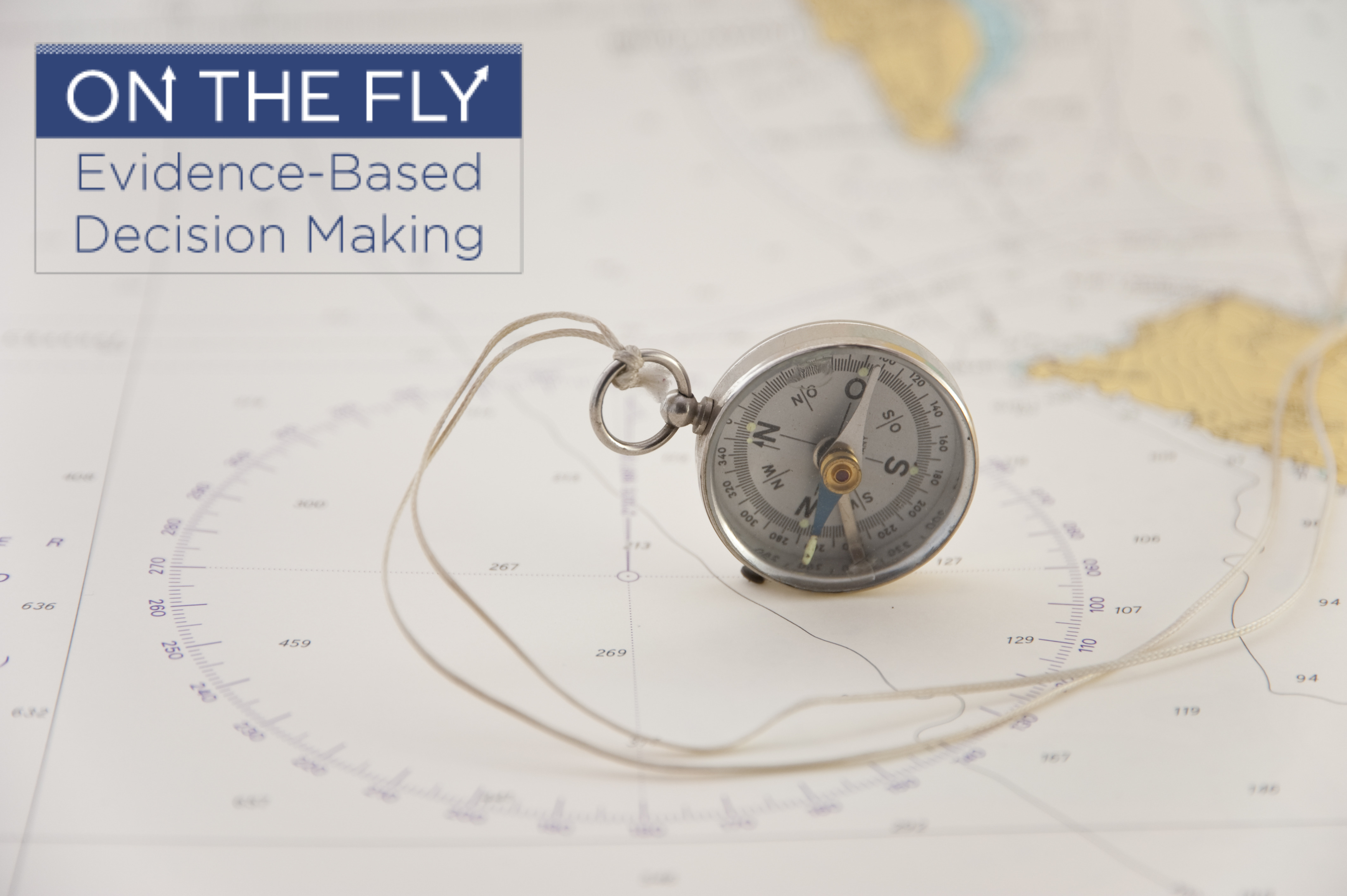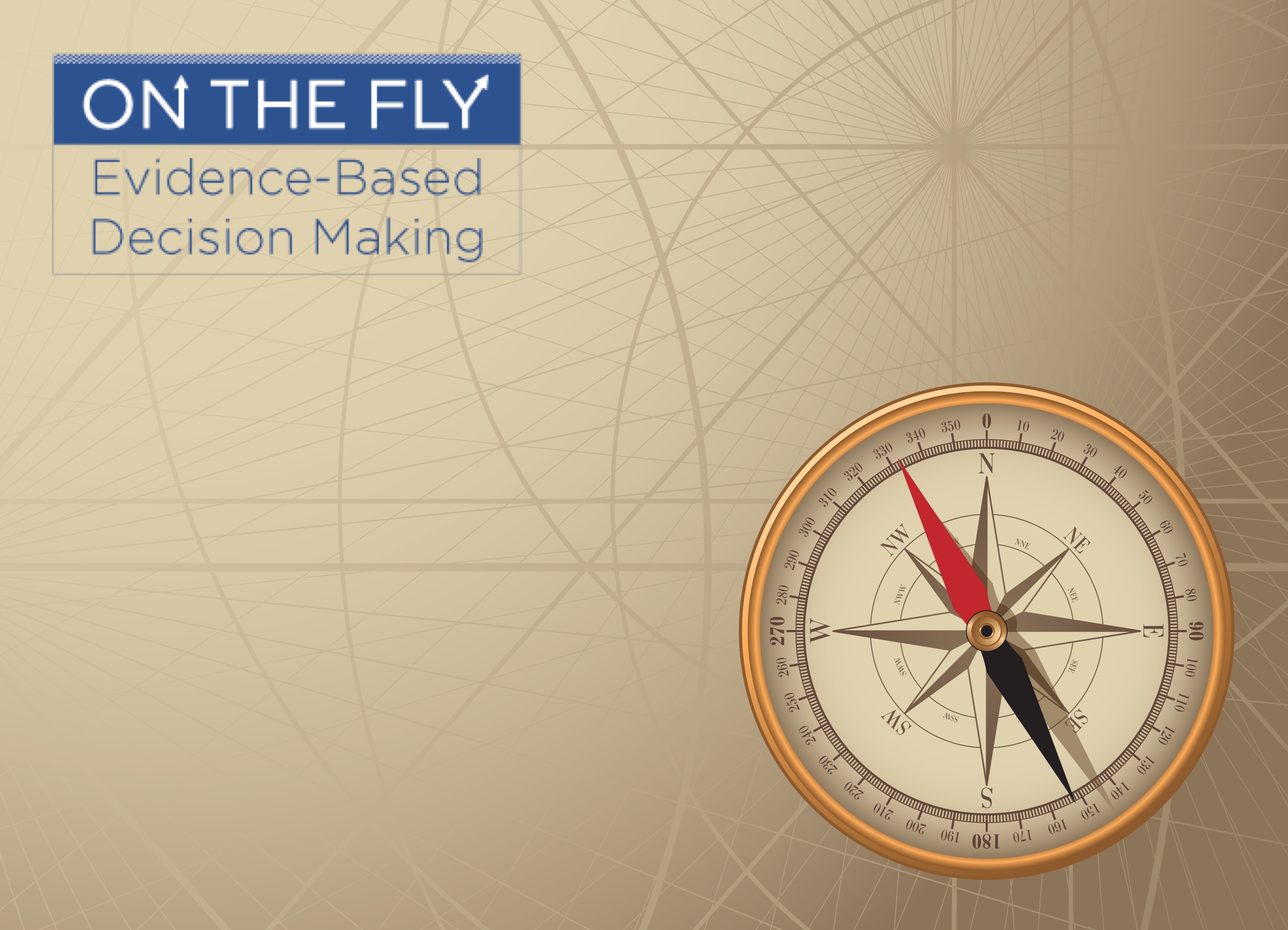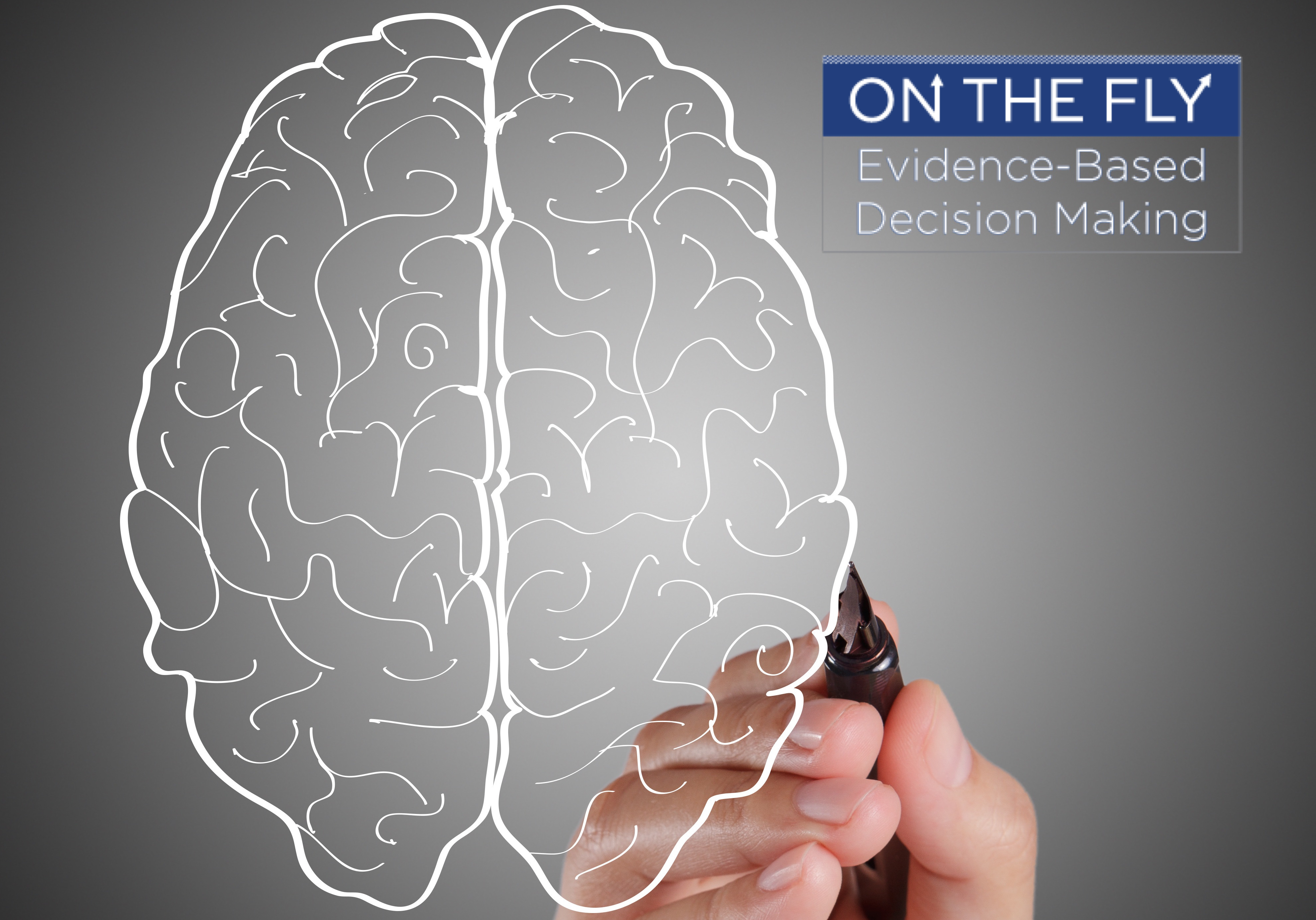Rooted in the health sciences where it goes by the moniker “evidence-based practice,” in recent years evidence-based decision making (EBDM) has rapidly evolved as a means of improving the quality of decisions, adapting to diverse applications. As an organizational leader who is on the lookout for ways to improve your skills and effectiveness, you may have heard of EBDM.
But others may be asking, “What exactly is EBDM, anyway?”
As with any rapidly developing practice, definitions differ. A lot, in fact. But for our purposes, here’s an “on the fly” definition that forms the backbone of this series:
Evidence-based decision making (EBDM) is a process for interpreting and organizing information gathered systematically from diverse sources to create a testable model of the relative effectiveness of alternative programs, policies, or practices.
Whew. There are a lot of moving parts in there. Having a firm grasp of the meaning of each element is crucial to the practice of EBDM, and this series will unpack them one by one.
For now, just keep in mind that you should care about EBDM because:
- over the long haul, decisionmaking by gut instinct is often a recipe for disaster,
- in fact, decisionmaking that puts all its chips on any single source of information (even “objective” research) is flawed, and
- decisions that flow from systematic consideration of multiple sources of information have the best chance of success.
EBDM is all about #3. Let’s look at some common impressions of EBDM:
“EBDM seems like organized common sense.”
Heck, yes. A well-executed EBDM process is intuitively compelling—even when it leads to counter-intuitive results. In fact, when implemented properly, EBDM offers a powerful means not only to extend the reach of common sense, but also to correct for the blind spots of decisionmakers. (Yes, you have them, too. Sorry to break it to you.)
“But EBDM also seems really complicated. Isn’t it appropriate only for large, well-funded organizations or those engaged in high-risk fields like medicine?”
Definitely not. Thanks to ongoing refinements of the EBDM model, greater access to curated sources of evidence and measurement tools, and above all, the emergence of web technologies that collect and present data in easy-to-understand and compelling ways, EBDM is now within reach of virtually any organization, including yours.
“Are there any cautions or limitations in the use of EBDM?”
Of course. Just like any other powerful tool, EBDM can be misunderstood or misused— and we’ll give plenty of examples in the posts to come. Our purpose in writing EBDM On the Fly is to clarify both the opportunities and the pitfalls of this approach, grounding decisions in a reliable structure that minimizes risk and maximizes opportunities for success.
After all, as a leader you can’t not make decisions (even delay and avoidance are decisions, after all!). What you can do is strive to base them on solid ground, and, by learning from what happens, improve the quality of your decisions over time. We believe that the hidden costs of cleaning up the consequences of a string of haphazard or one-off decisions is far greater than the investment in time, energy and other resources required to bring the benefits of EBDM to your organization.
This is the third post in our Evidence-Based Decision Making On the Fly series.








Leave A Comment